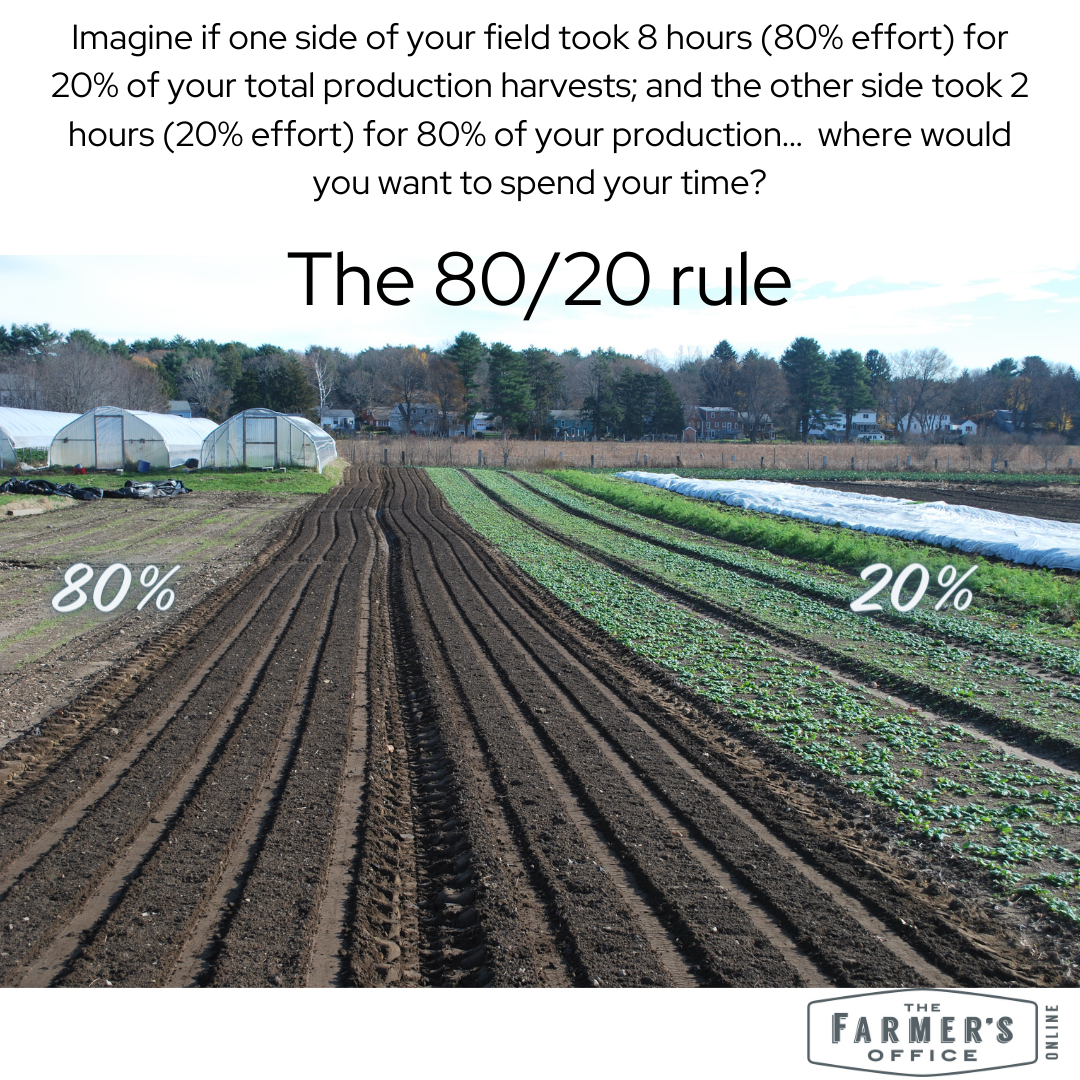The 80/20 Rule: The Key to Working Smarter, Not Harder… and Increasing Profits!

The 80/20 rule, also called The Pareto Principle, named after economist Vilfredo Pareto, posits that 80% of consequences come from 20% of the causes, asserting an unequal relationship between inputs and outputs.
More straightforward, and in farmer-speak, the “consequences” are your profits, production yields, or your customer base.
And the “causes” are your efforts and investments of resources, whether it’s dollars invested in infrastructure, labor hours, or marketing plans.
It would be like saying, 20% of your marketing efforts lead to 80% of your sales. Or 20% of your production leads to 80% of your profits.
Keep in mind, that if Pareto’s Principle is true, then the inverse is also true: that 80% of your efforts lead to 20% of your profits.
For example, if you have a marketing plan that includes emails, social media, and advertising, then 20% of your efforts (whether it’s your time or dollar invested) will lead to 80% of the engagement you get.
From the perspective of production, it could mean that 20% of your crops/products leads to 80% of your profits.
To be clear, this is a principle and not a hard and fast rule. In your business it may be the 60/40 rule. Or the 55/45 rule. For me it’s 75/40 – 75% of my business comes in 40% of the year.
The important thing to understand is that equal effort does not guarantee equal reward. If you invest 20 hours a week in your vegetable production and 20 hours a week in your egg layer operation, you won’t necessarily generate the same sales, nor earn the same profits.
You have limited resources… whether it’s time, money, and/or land. And you want to make the most of each of them.
As you think about your crop plans and sales strategies, keep in mind that you only have 24 hours a day… and you still need to eat, sleep, and restore. To make the most of your time, and get you closer to your goals, you want to make sure you focus on the 20% of causes that yield the greatest consequences. And let go of the some of the 80% causes that yield the least consequences.
The 80/20 rule reminds us that we will not get equal reward for the efforts in our businesses. Therefore, when we look at the profit model of our business, it’s important to look at the business in segments not just as a single unit.
For your sales channels –
How much time do you spend throughout the week on each sales channel. For the farmers market, for example, how much time do you spend loading the truck, driving to and from the market, and actually selling at the market. And how much revenue do you earn. Can you calculate your revenue per hour invested in selling? By contrast, how much time do you invest selling wholesale – whether it’s calling customers, packing orders or making deliveries And what’s your revenue per hour invested?
Which sales channel generates the better rewards (that is, the most revenue)? And which sales channel requires a lot of effort will minimal reward.
For your production –
Which of your products, which of your enterprises, yields the greatest reward (i.e. profit!) for the least amount of time. It’s not, “which product yields the greatest revenue.” The right questions, which product yields the greatest profit for the number of hours invested.
As you finalize your plans for the upcoming season, consider what’s the maximum benefit for your time invested. What will you do to make the most of it? And what is taking too much effort for too little reward? What can you let go of?
Dig deeper into the concept of “Profit per Hour” in The Farmer’s Office, Second Edition. I get into the all the details of the calculation in Chapter 8.
